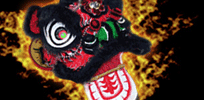

|

|
Welcome! |
 Wednesday, January 7
Wednesday, January 7 |
| WHAT'S HOT |
|
One Week Free Classes & Free Uniform |
| SITE OPTIONS |
 Site Intro Site Intro Guest Book Guest Book Contact Us Contact Us Mailing List Mailing List |
| QUICK LINKS |
 Testimonials Testimonials Coupons Coupons School Location School Location Class Schedule Class Schedule Tien Shan Pai Curriculum Tien Shan Pai Curriculum Wing Chun Curriculum Wing Chun Curriculum Tai Chi Chuan Curriculum Tai Chi Chuan Curriculum Seminars Seminars Event Calendar Event Calendar News News Articles Articles Photo Gallery Photo Gallery Products Products Chinese Terminology Chinese Terminology FAQ FAQ |
| SCHOOL SEARCH |

|
| Home -> Classes -> Tai Chi Chuan -> Yang Style History | |||
|
|
|||
Yang Style Tai Chi Chuan History
The originator of the Yang Style Taijiquan (also commonly known as Tai Chi Chuan) was Yang Lu Chan (1799-1872) who studied with the Chen family in Chenjiaguo Village for eighteen years. After this, he was invited to teach at the Imperial Court in Beijing. In order to teach the members of the Court, Yang modified the form, removing the explosive movements found in the Chen style. Yang Chen Fu (1883-1936), Yang Lu Chan's grandson, carried on the teaching of the Yang style with some of his own refinements. The Northern Shaolin Kung Fu and Tai Chi Academy practices this style as exemplified by Yang Zhen Ji, second son of Yang Chen Fu, with its capacity to be practiced by all ages and abilities. Yang style Taijiquan, both long and Short form has become the most popular style in the U.S. The Yang style, as all the Taijiquan styles, is an exercise for the unity of the mind, body, and spirit. It has three components: philosophical, martial, and health. To capture the essence of Taijiquan, one learns to bring together internal energy, continuous movement, centering, rooting, and relaxed alertness. The "Simplified 24 form (created in China in 1956) taught at the Northern Shaolin Kung Fu and Tai Chi Academy consists of 24 postures practiced in a slow, continuous series of movements. Each movement combines the circular give and take of "Yin and Yang" energies, which are inherent in the form. Each posture has martial applications which are shown at the academy. Students also practice Yang Style Taiji Straight Sword (Gim) and Push-Hands exercises to help refine and understand the movements and energies involved in Taijiquan. Push Hands exercises demonstrate the martial applications of the movements, develop sensitivity towards another's energy, and enhance the feeling of internal energy flows. Students are also taught many types of Chi Qigong and body opening exercises to help enhance breathing and reduce every day stress levels. The "Ten Essences" of Yang Style Taijiquan by Yang Chen Fu:
|
|
|



